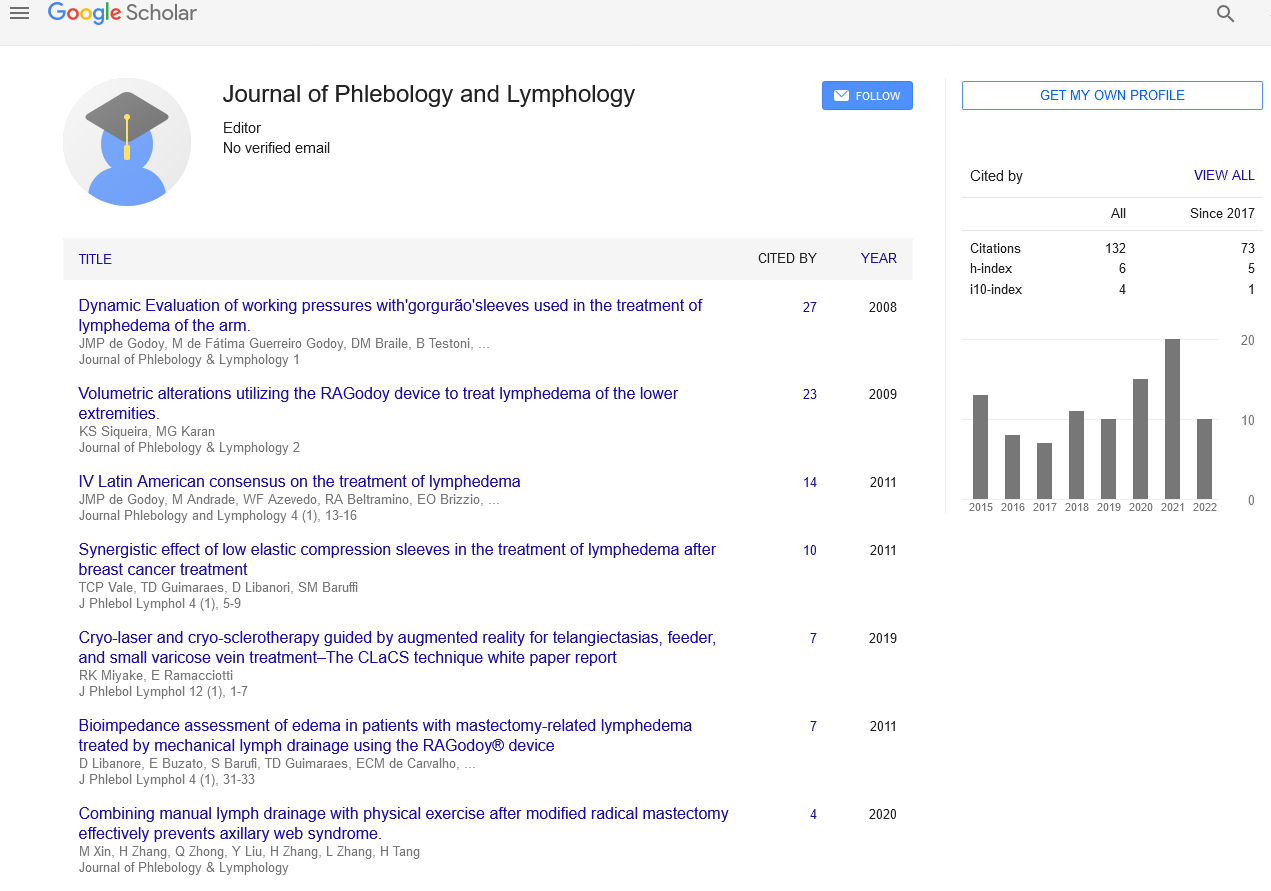A quick summary on smouldering lymphoma
Received: 04-Jan-2022, Manuscript No. puljpl-21-3894; Editor assigned: 16-Jan-2022, Pre QC No. puljpl-21-3894; Accepted Date: Jan 25, 2022; Reviewed: 21-Jan-2022 QC No. puljpl-21-3894; Revised: 25-Jan-2022, Manuscript No. puljpl-21-3894; Published: 28-Jan-2022
Citation: Shallcross D. A quick summary on smouldering lymphoma. J Phlebol Lymphology 2022;15(1):1-1
This open-access article is distributed under the terms of the Creative Commons Attribution Non-Commercial License (CC BY-NC) (http://creativecommons.org/licenses/by-nc/4.0/), which permits reuse, distribution and reproduction of the article, provided that the original work is properly cited and the reuse is restricted to noncommercial purposes. For commercial reuse, contact reprints@pulsus.com
Abstract
Smouldering myeloma, is a disease classified as intermediate in a spectrum of step-wise progressive diseases termed plasma cell dyscrasias. In this spectrum of diseases, a clone of plasma cells secreting monoclonal paraprotein (also termed myeloma protein or M protein) causes the relatively benign disease of monoclonal gammopathy of undetermined significance. This clone proliferates and may slowly evolve into more aggressive sub-clones that cause smouldering multiple myeloma. Further and more rapid evolution causes the overtly malignant stage of multiple myeloma and can subsequently lead to the extremely malignant stage of secondary plasma cell leukemia. Thus, some patients with smouldering myeloma progress to multiple myeloma and plasma cell leukemia.
Keywords
Immunoglobulin new matter receptor; Homodimeric; Chondrichthyes; Monoclonal gammopathy
Introduction
Smouldering myeloma, however, is not a malignant disease. It is characterised as a pre-malignant disease that lacks symptoms but is associated with bone marrow biopsy showing the presence of an abnormal number of clonal myeloma cells, blood and/or urine containing a myeloma protein, and a significant risk of developing into a malignant disease.
Smouldering myeloma characteristics
• Serum paraprotein >30 g/l or urinary monoclonal protein ≥500 mg per 24 h AND/OR
• Clonal plasma cells >10% and <60% on bone marrow biopsy AND
• No evidence of end organ damage that can be attributed to plasma cell disorder AND
• No myeloma-defining event (>60% plasma cells in bone marrow OR Involved/Uninvolved light chain ratio>100)
Smouldering myeloma with an increasingly abnormal serum Free Light Chain (FLC) ratio is associated with a higher risk for progression to active multiple myeloma.
Treatment for myeloma is targeted on therapies that decrease the being plasmacyte population and consequently decrease the signs and symptoms of unwellness. If the unwellness is totally well (i.e. there’s a Para protein and an abnormal bone marrow population however no end-organ damage), as in smouldering metastatic tumor, treatment is often delayed, or restricted to clinical trials. they’re usually attentive to attentive to. The immune serum globulin light-weight chain genes in tetrapod’s is classified into 3 distinct groups: alphabetic character (κ), lambda (λ), and alphabetic character (σ). The divergence of the κ, λ, and σ isotypes preceded the radiation of tetrapod’s.
The σ isotype was lost once the evolution of the amphibian lineage and before the emergence of the reptilian lineage. alternative forms of lightweight chains may be found in lower vertebrates, like the Ig-Light-Iota chain of Chondrichthyes and subclass Teleostei. Camelids area unit distinctive among mammals as they even have absolutely useful antibodies that have 2 significant chains, however lack the sunshine chains typically paired with every significant chain. Sharks conjointly possess, as a part of their adaptive immune systems, a useful heavy-chain homodimeric antibody-like molecule observed as Immunoglobulin New Matter Receptor (IgNAR). IgNAR is believed to own ne’er had associate associated light-weight chain, contrary to the understanding that the heavy-chain-only antibodies in camelids might have lost its light-weight chain partner through evolution. accrued levels of free immune globulin light-weight chains have conjointly been detected in numerous inflammatory diseases. it’s vital to notice that, in distinction to accrued levels in malignant neoplastic disease patients, these immune globulin light-weight chains area unit polyclonal. Recent studies have shown that these immune globulin light-weight chains will bind to mast cells and, victimization their ability to bind matter, facilitate activation of those mast cells. Activation of mast cells ends up in the discharge of varied proinflammatory mediators that area unit believed to contribute to the event of the disease. Recent studies have shown that immune globulin light-weight chains not solely activate mast cells however conjointly dorsal root ganglia and neutrophils, increasing their potential role as mediators in disease.
Conclusion
Individual B-cells in animal tissue possess either alphabetic character or lambda lightweight chains, however ne’er each along. Specific arrangement of lambda lightweight chain of immunoglobulins will result in loss of some super molecule secret writing genes, that doesn’t appear to be functionally relevant (while functionally relevant miR-650 is often overexpressed). exploitation assay, it’s doable to work out the relative abundance of B-cells expressing alphabetic character and lambda lightweight chains. If the lymph gland or similar tissue is reactive, or otherwise benign, it ought to possess a combination of alphabetic character positive and lambda positive cells. If, however, one variety of lightweight chain is considerably a lot of common than the opposite, the cells are probably all derived from a tiny low being population, which can indicate a malignant condition, like B-cell cancer.





